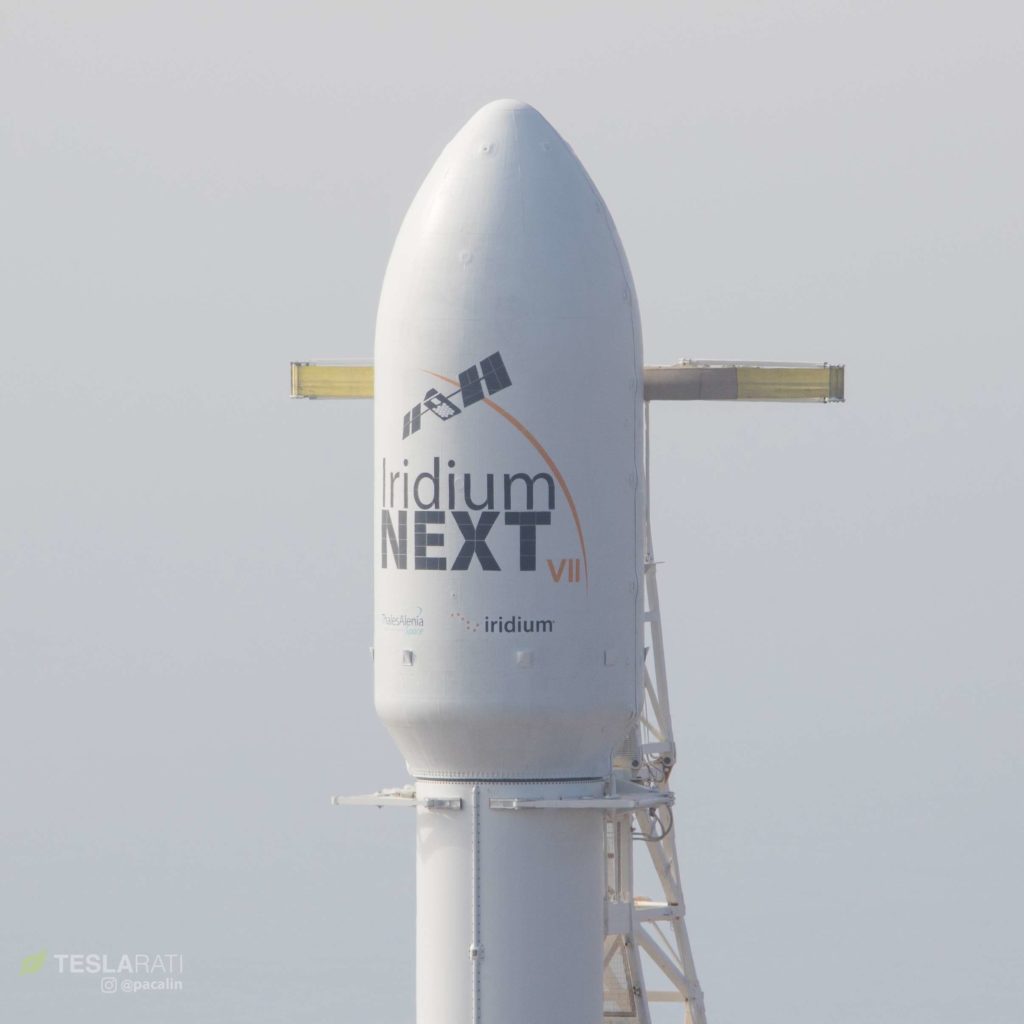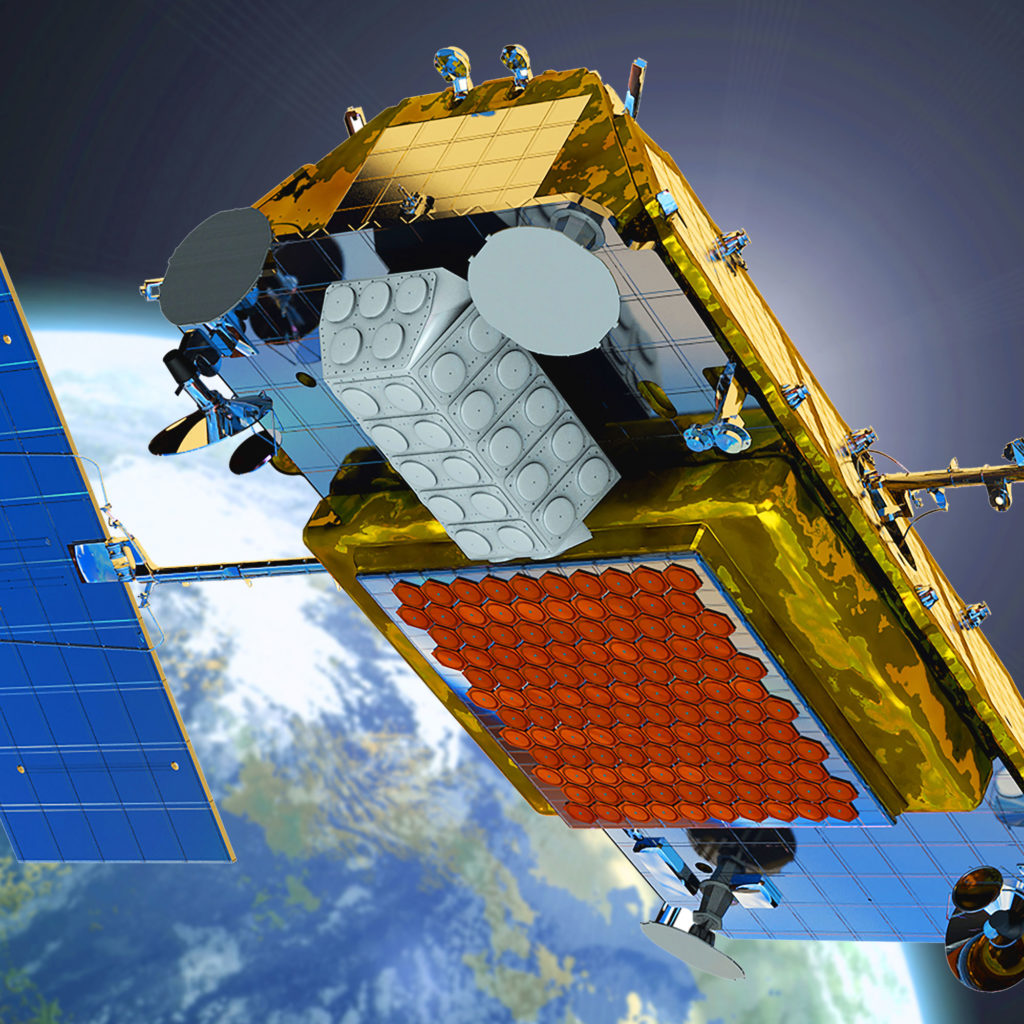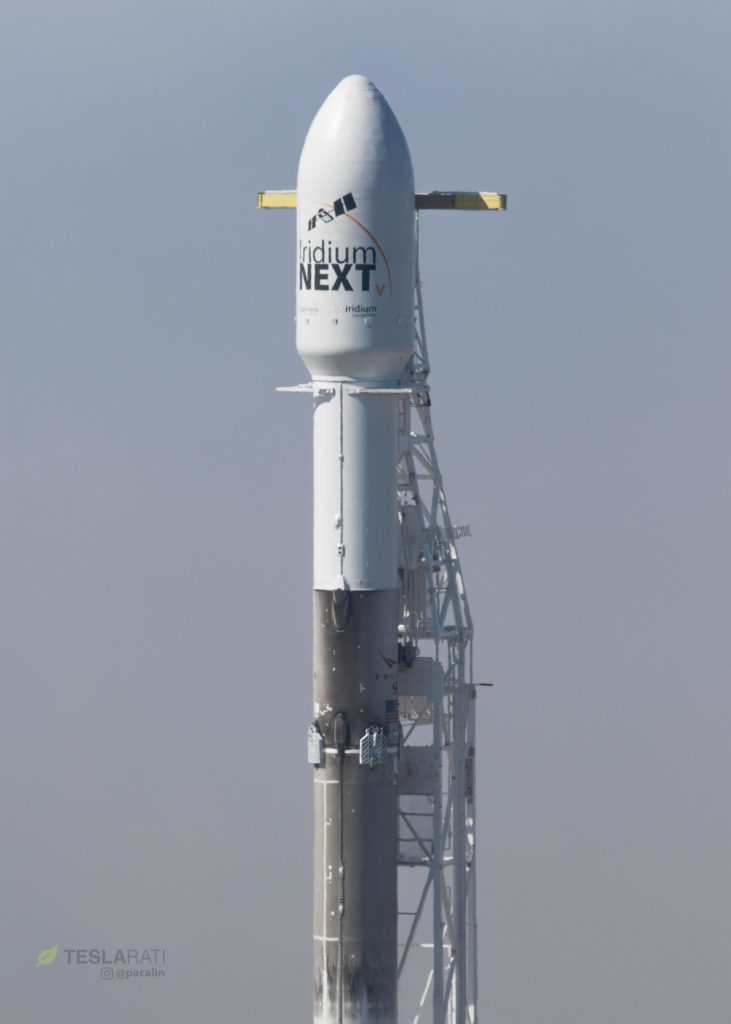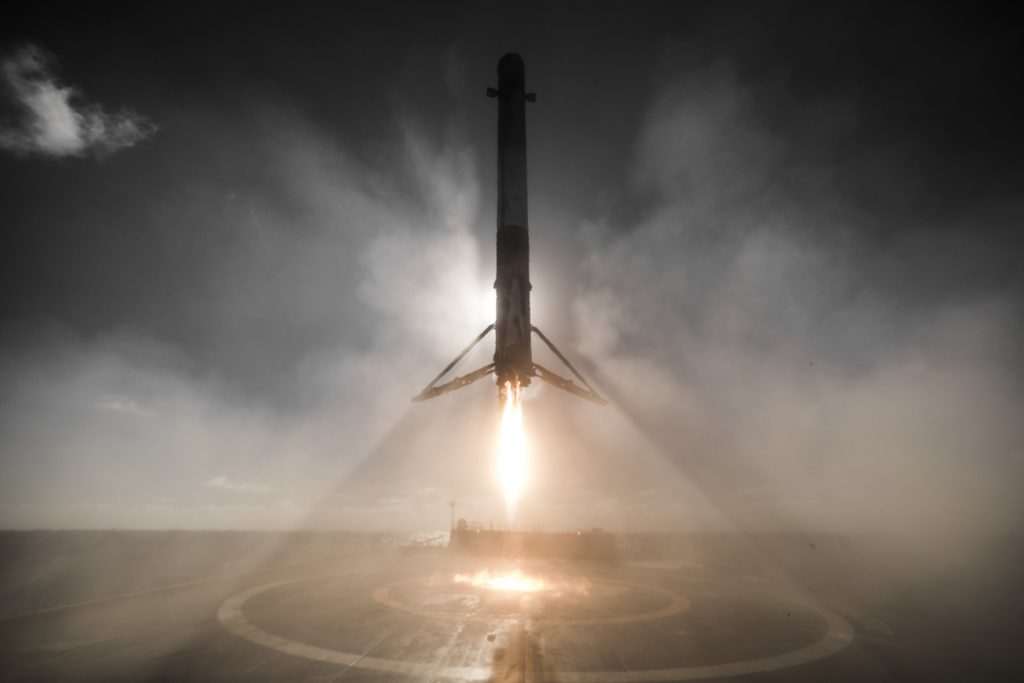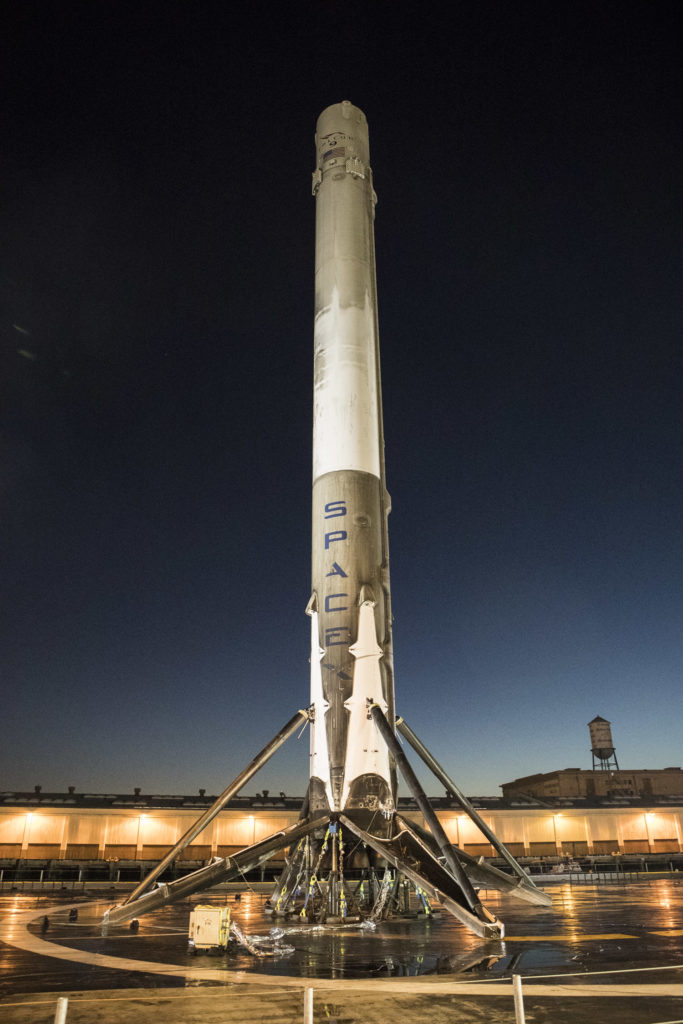
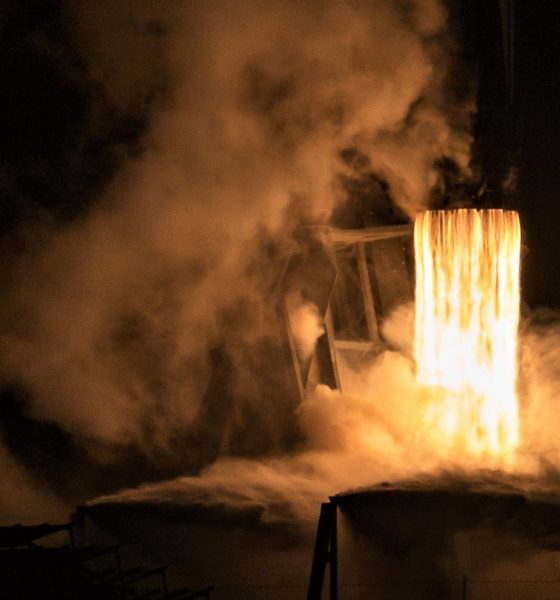
News
SpaceX tracks towards first launch of 2019 with flight-proven Falcon 9 static fire
SpaceX has completed a Falcon 9 static fire test ahead of the company’s first launch of 2019, kicking off what is looking to be a truly jam-packed year for Falcon 9 and BFR. Most important, of course, is SpaceX’s primary business and main sources of revenue – safely and reliably launching customer satellites, payloads, and – soon – astronauts into orbit.
Previously tasked with launching heavy communications satellite Telstar 18V in September 2018, Falcon 9 B1049 is now set to launch an arguably historic mission for both SpaceX and customer Iridium, the eighth and final contracted launch of the upgraded Iridium NEXT satellite communications constellation.
Static fire test of Falcon 9 complete. Working with customer to determine best launch opportunity to complete the Iridium NEXT constellation; will announce targeted launch date once confirmed.
— SpaceX (@SpaceX) January 6, 2019
Struck all the way back in June 2010, Iridium’s decision to award the full NEXT constellation launch contract to SpaceX less than two weeks after Falcon 9’s first and only launch may well be the greatest calculated leap of faith in the history of commercial spaceflight. SpaceX did admittedly offer an unbeatable price ($492M for eight launches, $61.5M per launch) that may have allowed Iridium to afford a new constellation in the first place, but the risk Iridium took was truly immense at the time.
Originally launched between 1997 and 1998, the first Iridium constellation became and still remains the only satellite communications constellation in history to offer global and persistent coverage anywhere on Earth, allowing those with Iridium devices to guarantee connectivity no matter where they are. To some extent, the original constellation has become a subtle but omnipresent backbone of a huge variety of ventures, companies, and services, ranging from marine vessel tracking and emergency response to the go-to solution for those heading far off the beaten path. As just one small example, SpaceX’s large fleet of sea-going vessels and its cross-country transport infrastructure both rely on Iridium for streamlined company-wide movement tracking, making life considerably easier for logistics and planning teams.
@SpaceX #falcon9 vertical at SLC-4. Iridium NEXT-8 slated for 01/08 from #VandenbergAFB. #spacex #iridium pic.twitter.com/uJBIgG5Lrp
— Brian Sandoval (@sandovalphotos) January 6, 2019
Iridium’s decision to use SpaceX for its NEXT constellation likely also gave SpaceX a massive stature boost, taking it from the company with just a handful of commercial contracts that had failed three of its last five launches to the company that secured what was at the time the largest single commercial launch contract in history. Alongside NASA’s Commercial Orbital Transport Services (COTS) and Resupply Services (CRS) commitments (~14 launches as of 2010), Iridium NEXT raised SpaceX’s commercial manifest from perhaps 2 missions to ~10 while also taking the value of those contracts from an almost negligible sum to well over half a billion dollars.
Although SpaceX and Iridium originally planned for launches to take place over a roughly 24-month period stretch from 2015 to 2017, unplanned technical delays and a duo of catastrophic Falcon 9 failures (CRS-7 and Amos-6) in 2015 and 2016 ultimately pushed Iridium NEXT’s launch debut back several years. Despite those immense hurdles and a range of smaller issues, SpaceX and Iridium were finally able to begin launching satellites in January 2017 and have continued to consistently do so every 3-4 months since then. Aside from one partial NASA rideshare mission that featured five NEXT satellites in May 2018, all seven launches have placed ten NEXT satellites (weighing approx. 10,000 kg or 22,000 lb total) in a variety of low polar orbits without a single known hitch.
- A rare glimpse inside SpaceX’s SLC-4 rocket integration hangar, January 2017. (SpaceX)
- Iridium-7’s Falcon 9 payload fairing, July 2018. (Pauline Acalin)
- LEO communications satellites like Iridium’s NEXT constellation feature totally flat panels of phased array antennas, capable of forming beams digitally. (Harris)
Falcon 9 enters the era of reusability
Closely following SES, NASA, and SSL (BulgariaSat), Iridium also became the fourth commercial entity to launch on a flight-proven Falcon 9 rocket for the launch vehicle’s fourth flight-proven mission ever. Iridium-8 will become the fourth constellation launch to fly aboard a sooty Falcon 9 rocket, meaning that a full 50% of the next-gen satellites will have launched on reused rockets, easily one of the coolest bragging rights ever. Currently standing at 65 NEXT satellites in orbit and rapidly nearing operational status, Falcon 9 B1049 and a fresh upper stage will (fingers crossed) place the last ten satellites in orbit to complete the constellation’s last plane and seal the last gap in its perfect global coverage.
Although NEXT would have been valuable for the sole reason that its predecessor satellites are now 5-10 years past their designed lifespans, NEXT will also serve to dramatically increase Iridium’s overall bandwidth, slash concurrent user bottlenecks, and provide a platform for new services like Aireon, which hopes to become the first operator of a truly commercial aircraft tracking service with global satellite-based coverage.
- Falcon 9 B1041.2 seen before launching Iridium-5. (Pauline Acalin)
- Iridium-1’s successful and scenic landing on Pacific drone ship JRTI, January 2017. This could be an increasingly rare occurrence in the Pacific, thanks to SpaceX’s new land-based landing zone. (SpaceX)
- 2017 saw SpaceX recovery 10 Falcon 9 first stages, 5 by sea. (SpaceX)
All things considered, it will be hugely bittersweet to watch Iridium and SpaceX’s direct relationship come to a close with the launch of Iridium-8. Aside from nine additional on-orbit spares once all 75 are launched, Iridium will also have a complement of six more spares that will be kept in storage on the ground until they are required in orbit. If or when those times come, SpaceX will be able to compete with other launch providers for the opportunity to carry maybe one or two Iridium satellites – likely as rideshare payloads – into orbit sometime in the future.
Iridium open to rideshares for spare satellite launches https://t.co/ino39oWCHw pic.twitter.com/56PTcaEMW3
— SpaceNews (@SpaceNews_Inc) January 4, 2019
In the meantime, stay tuned for Iridium-8’s official launch time and date, likely to be announced by SpaceX sometime within the next 24-48 hours.
For prompt updates, on-the-ground perspectives, and unique glimpses of SpaceX’s rocket recovery fleet check out our brand new LaunchPad and LandingZone newsletters!

News
Tesla Model 3 named New Zealand’s best passenger car of 2025
Tesla flipped the switch on Full Self-Driving (Supervised) in September, turning every Model 3 and Model Y into New Zealand’s most advanced production car overnight.
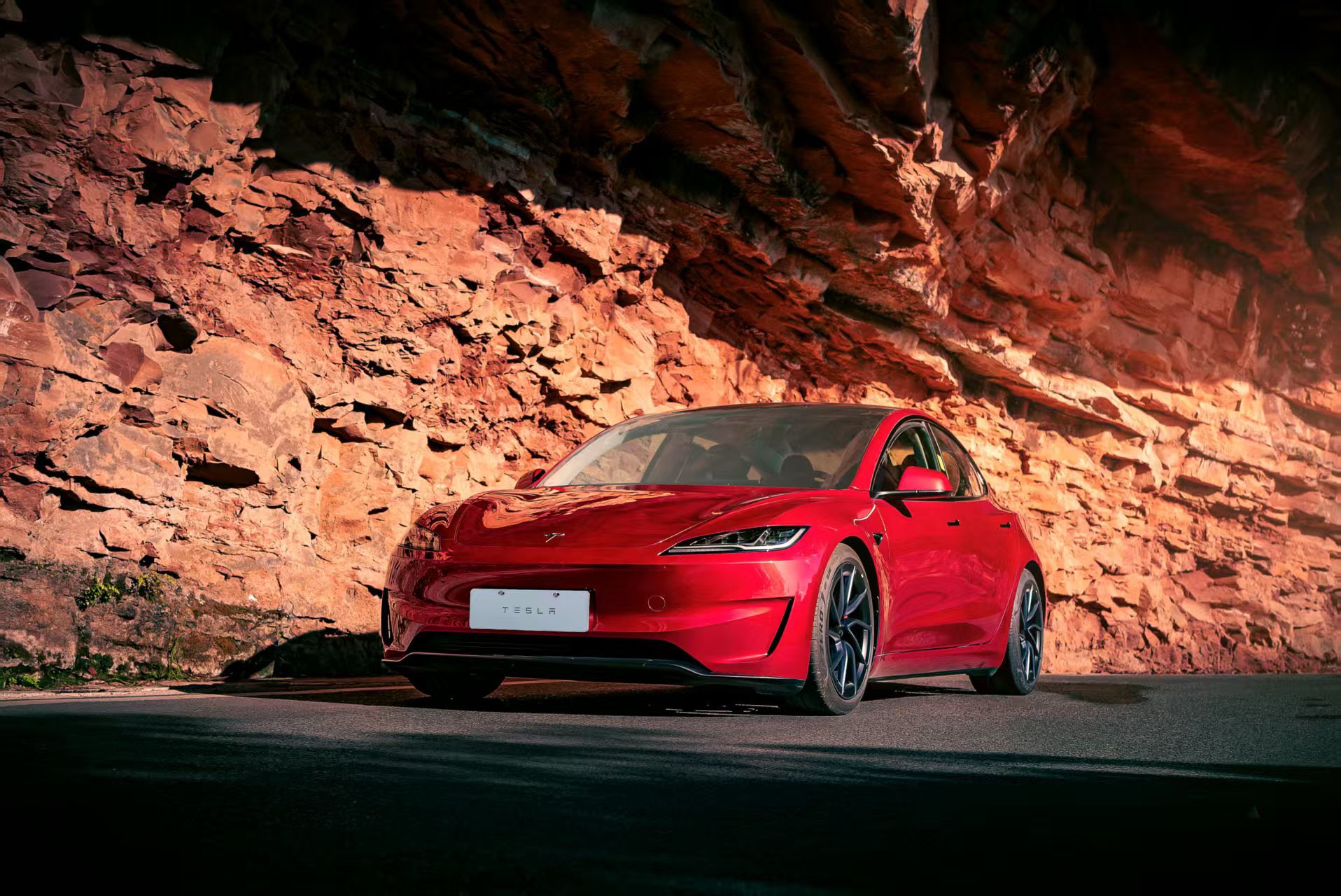
The refreshed Tesla Model 3 has won the DRIVEN Car Guide AA Insurance NZ Car of the Year 2025 award in the Passenger Car category, beating all traditional and electric rivals.
Judges praised the all-electric sedan’s driving dynamics, value-packed EV tech, and the game-changing addition of Full Self-Driving (Supervised) that went live in New Zealand this September.
Why the Model 3 clinched the crown
DRIVEN admitted they were late to the “Highland” party because the updated sedan arrived in New Zealand as a 2024 model, just before the new Model Y stole the headlines. Yet two things forced a re-evaluation this year.
First, experiencing the new Model Y reminded testers how many big upgrades originated in the Model 3, such as the smoother ride, quieter cabin, ventilated seats, rear touchscreen, and stalk-less minimalist interior. Second, and far more importantly, Tesla flipped the switch on Full Self-Driving (Supervised) in September, turning every Model 3 and Model Y into New Zealand’s most advanced production car overnight.
FSD changes everything for Kiwi buyers
The publication called the entry-level rear-wheel-drive version “good to drive and represents a lot of EV technology for the money,” but highlighted that FSD elevates it into another league. “Make no mistake, despite the ‘Supervised’ bit in the name that requires you to remain ready to take control, it’s autonomous and very capable in some surprisingly tricky scenarios,” the review stated.
At NZ$11,400, FSD is far from cheap, but Tesla also offers FSD (Supervised) on a $159 monthly subscription, making the tech accessible without the full upfront investment. That’s a game-changer, as it allows users to access the company’s most advanced system without forking over a huge amount of money.
News
Tesla starts rolling out FSD V14.2.1 to AI4 vehicles including Cybertruck
FSD V14.2.1 was released just about a week after the initial FSD V14.2 update was rolled out.

It appears that the Tesla AI team burned the midnight oil, allowing them to release FSD V14.2.1 on Thanksgiving. The update has been reported by Tesla owners with AI4 vehicles, as well as Cybertruck owners.
For the Tesla AI team, at least, it appears that work really does not stop.
FSD V14.2.1
Initial posts about FSD V14.2.1 were shared by Tesla owners on social media platform X. As per the Tesla owners, V14.2.1 appears to be a point update that’s designed to polish the features and capacities that have been available in FSD V14. A look at the release notes for FSD V14.2.1, however, shows that an extra line has been added.
“Camera visibility can lead to increased attention monitoring sensitivity.”
Whether this could lead to more drivers being alerted to pay attention to the roads more remains to be seen. This would likely become evident as soon as the first batch of videos from Tesla owners who received V14.21 start sharing their first drive impressions of the update. Despite the update being released on Thanksgiving, it would not be surprising if first impressions videos of FSD V14.2.1 are shared today, just the same.
Rapid FSD releases
What is rather interesting and impressive is the fact that FSD V14.2.1 was released just about a week after the initial FSD V14.2 update was rolled out. This bodes well for Tesla’s FSD users, especially since CEO Elon Musk has stated in the past that the V14.2 series will be for “widespread use.”
FSD V14 has so far received numerous positive reviews from Tesla owners, with numerous drivers noting that the system now drives better than most human drivers because it is cautious, confident, and considerate at the same time. The only question now, really, is if the V14.2 series does make it to the company’s wide FSD fleet, which is still populated by numerous HW3 vehicles.
News
Waymo rider data hints that Tesla’s Cybercab strategy might be the smartest, after all
These observations all but validate Tesla’s controversial two-seat Cybercab strategy, which has caught a lot of criticism since it was unveiled last year.
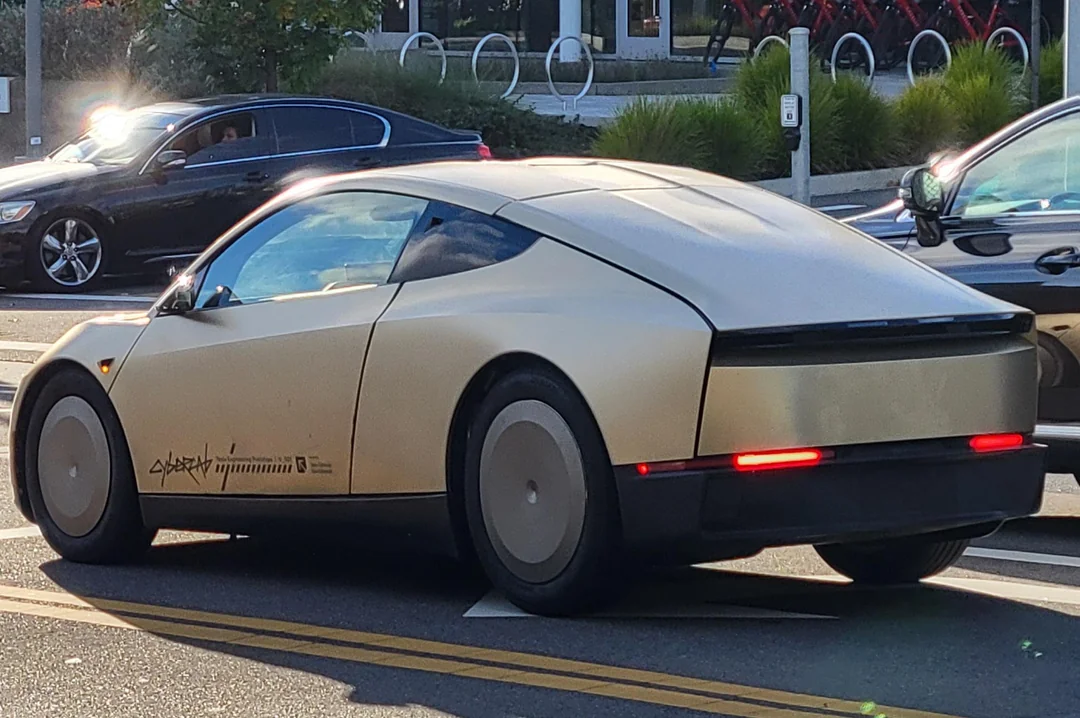
Toyota Connected Europe designer Karim Dia Toubajie has highlighted a particular trend that became evident in Waymo’s Q3 2025 occupancy stats. As it turned out, 90% of the trips taken by the driverless taxis carried two or fewer passengers.
These observations all but validate Tesla’s controversial two-seat Cybercab strategy, which has caught a lot of criticism since it was unveiled last year.
Toyota designer observes a trend
Karim Dia Toubajie, Lead Product Designer (Sustainable Mobility) at Toyota Connected Europe, analyzed Waymo’s latest California Public Utilities Commission filings and posted the results on LinkedIn this week.
“90% of robotaxi trips have 2 or less passengers, so why are we using 5-seater vehicles?” Toubajie asked. He continued: “90% of trips have 2 or less people, 75% of trips have 1 or less people.” He accompanied his comments with a graphic showing Waymo’s occupancy rates, which showed 71% of trips having one passenger, 15% of trips having two passengers, 6% of trips having three passengers, 5% of trips having zero passengers, and only 3% of trips having four passengers.
The data excludes operational trips like depot runs or charging, though Toubajie pointed out that most of the time, Waymo’s massive self-driving taxis are really just transporting 1 or 2 people, at times even no passengers at all. “This means that most of the time, the vehicle being used significantly outweighs the needs of the trip,” the Toyota designer wrote in his post.
Cybercab suddenly looks perfectly sized
Toubajie gave a nod to Tesla’s approach. “The Tesla Cybercab announced in 2024, is a 2-seater robotaxi with a 50kWh battery but I still believe this is on the larger side of what’s required for most trips,” he wrote.
With Waymo’s own numbers now proving 90% of demand fits two seats or fewer, the wheel-less, lidar-free Cybercab now looks like the smartest play in the room. The Cybercab is designed to be easy to produce, with CEO Elon Musk commenting that its product line would resemble a consumer electronics factory more than an automotive plant. This means that the Cybercab could saturate the roads quickly once it is deployed.
While the Cybercab will likely take the lion’s share of Tesla’s ride-hailing passengers, the Model 3 sedan and Model Y crossover would be perfect for the remaining 9% of riders who require larger vehicles. This should be easy to implement for Tesla, as the Model Y and Model 3 are both mass-market vehicles.


